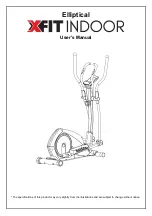
Page | 18
Monitoring Your Heart Rate
In order to obtain the greatest cardiovascular benefits from your exercise workout, it is important to
work within your target heart rate zone. The American Heart Association defines this target as 60%-
75% percent of your maximum heart rate.
Your maximum heart rate may be roughly calculated by subtracting your age from 220. Your
maximum heart rate and aerobic capacity naturally decreases as you age. This will vary from one
person to another. Use this number to find your approximate effective target zone. It is most effective
to train at your target heart rate between 60% and 85% of your maximum heart rate; referred to as
“Training Zone”. In order to get the most accurate reading, it is recommended to enter your age
before your workout.
Before beginning your workout, check your normal resting heart rate. Place your fingers lightly
against your neck or against your wrist over the main artery. After finding your pulse, count the
number of beats in 10 seconds. Multiply the number of beats by six to determine your resting pulse
rate per minute. We recommend taking your heart rate at these times; at rest, after warming up,
during your workout and two minutes into your cool down, to accurately track your progress as it
relates to better fitness.
During your first several months of exercising, the AHA recommends aiming for the lower part of the
target heart rate zone-60%, then gradually progressing up to 75%. According to the AHA,
exercising above 75% of your maximum heart rate may be too strenuous unless you are in top
physical






































